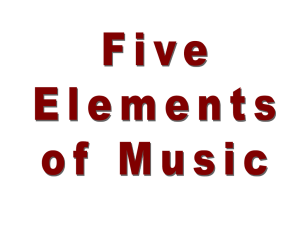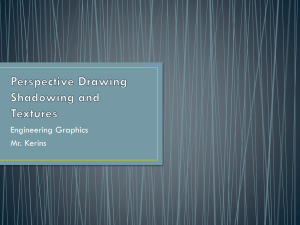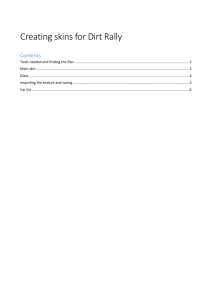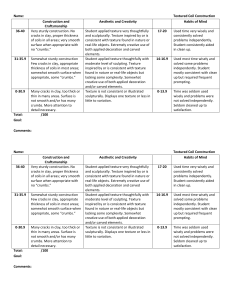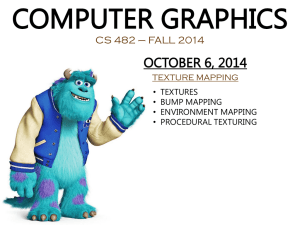Chapter 7-Texture
advertisement
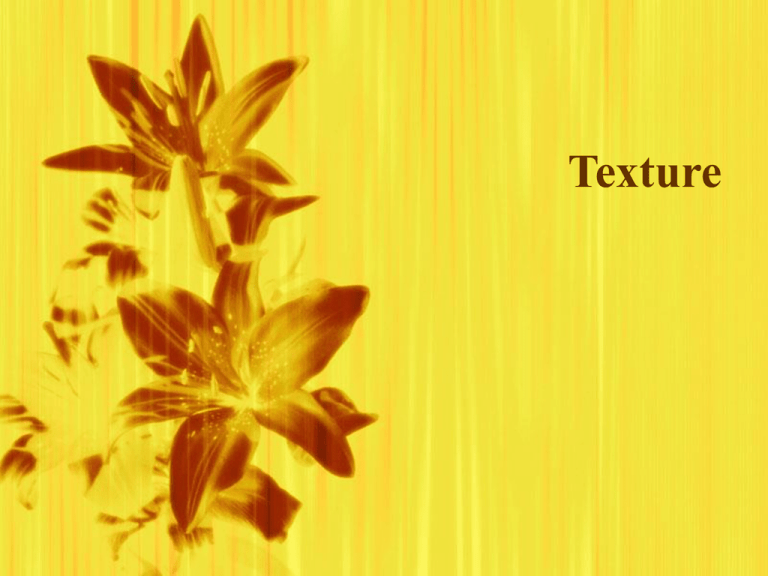
Texture What Is Texture? Texture refers to how the surface of something feels to the touch. It is perceived through touch & vision. QuickTime™ and a TIFF (Uncompressed) decompressor are needed to see this picture. Actual Texture Actual Textures occur in real objects that you can actually touch. QuickTime™ and a TIFF (Uncompressed) decompressor are needed to see this picture. Simulated Texture QuickTime™ and a TIFF (Uncompressed) decompressor are needed to see this picture. An imitation of an actual texture using a visual illustration of a real texture You can see these textures and imagine how they feel, but they would only feel like the surface painted on. It’s the illusion of a 3D surface. Invented Texture The impression of texture, invented by the artist, that it is used in a decorative, rather than realistic way QuickTime™ and a TIFF (Uncompressed) decompressor are needed to see this picture. Glossy v. Matte Glossy refers to a smooth & shiny surface, like a newly waxed floor. Reflects bright light. Matte means dull- smooth but not shiny, like the surface of a chalkboard. Reflects soft, dull light. Smooth v. Rough smooth-reflects light evenly; ex: plastic, chrome, table top rough-reflects light unevenly; ex: fur, grass, sand paper Methods Used by Artists to Add Texture to Their Work: Decalcomania-a technique of creating random texture patterns by applying thick paint to two surfaces, pressing them together, and then pulling apart Frottage: a method of creating texture by rubbing a crayon over a piece of paper on a rough surface to capture the texture or scraping across a freshly painted canvas that has been placed over a similar surface Grattage: the technique of scratching into wet paint with a variety of tools to create texture Collage artistic composition of materials, such as fabric or paper, pasted over a surface initiated by Picasso in 1912 when he pasted a section of commercially printed oilcloth to his cubist painting, Still Life with Chair Caning





